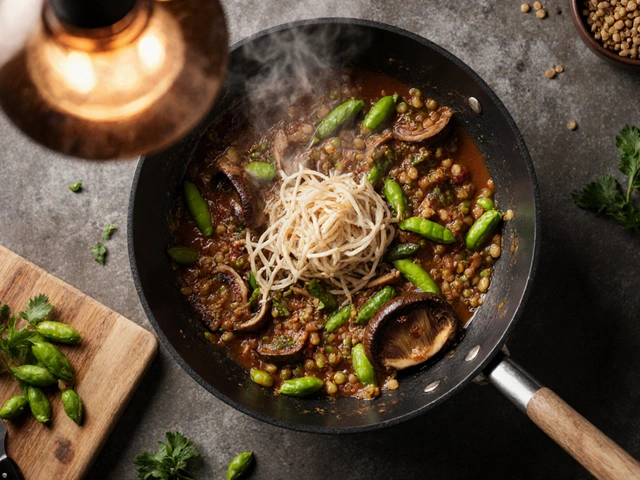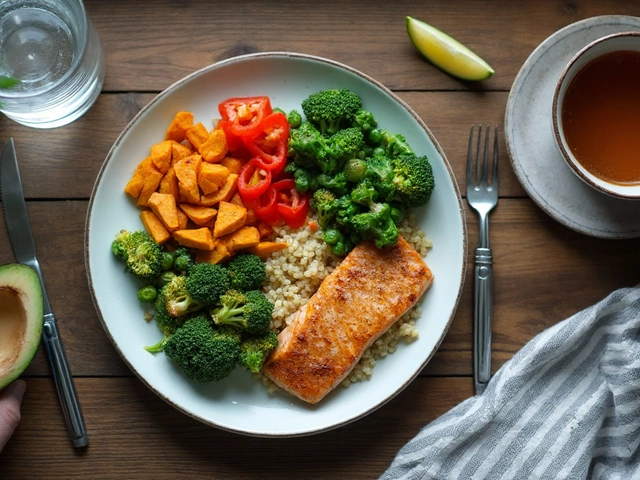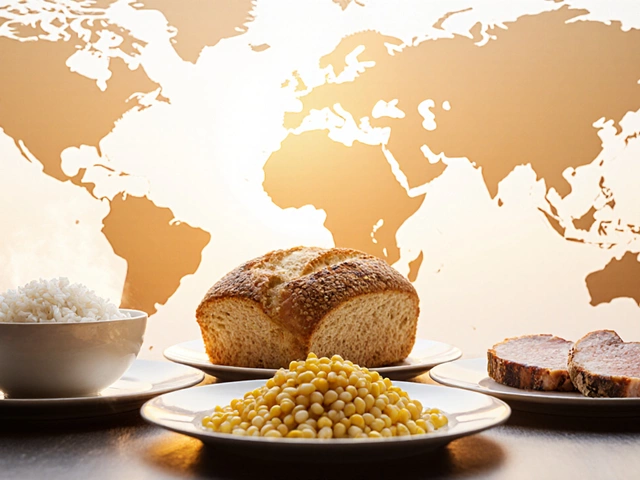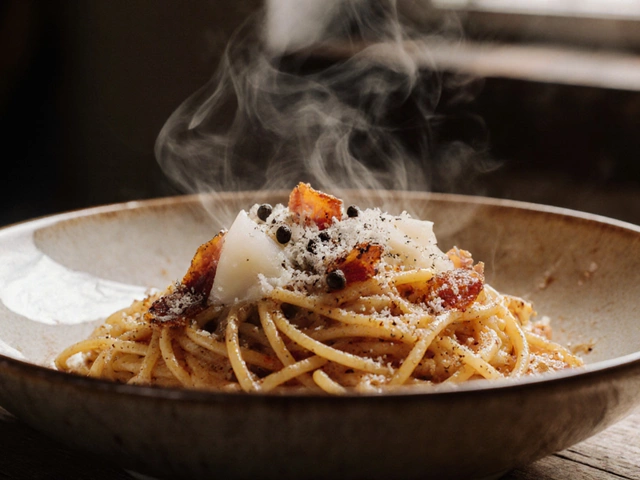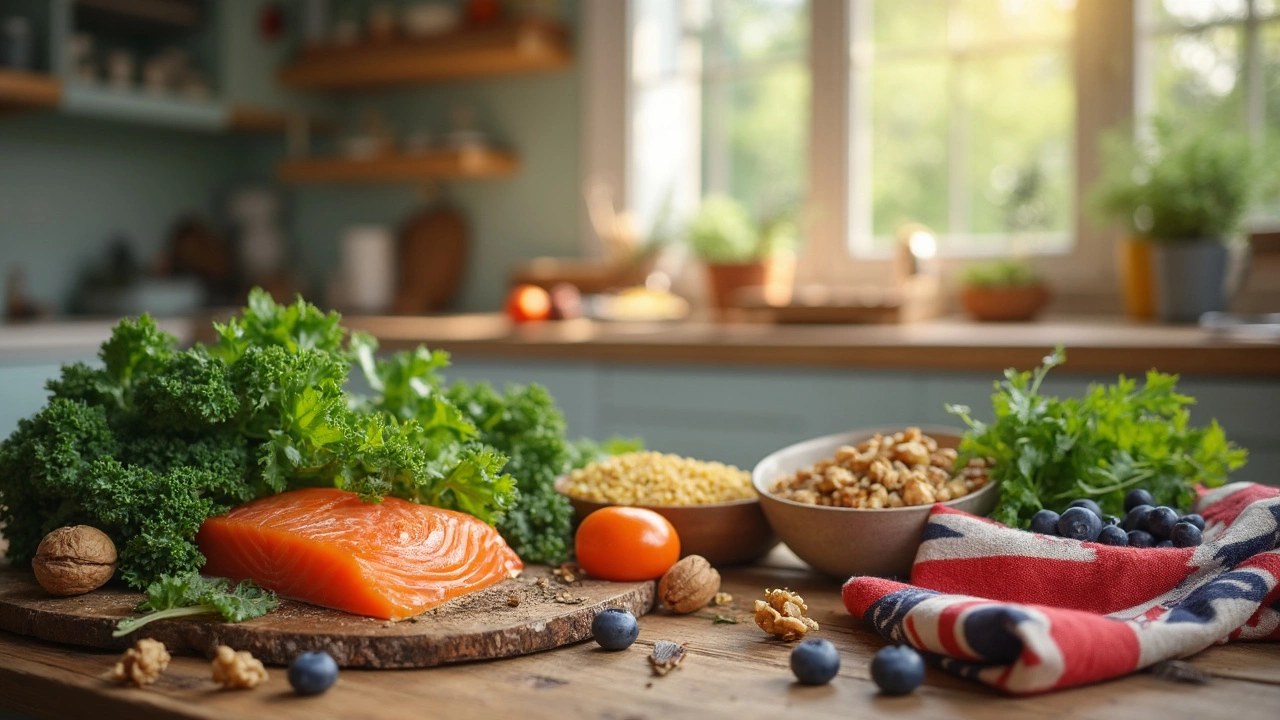
People love to argue about what’s actually the healthiest thing you can eat. Some swear by berries, others back salmon, but if you ask nutrition researchers, they usually put one thing head and shoulders above the rest: leafy green vegetables. Think spinach, kale, and Swiss chard.
Why the fuss? Leafy greens pack in vitamins, minerals, fiber, and antioxidants for hardly any calories. They’ve been shown to help with everything from heart health to lowering your risk of diabetes. Toss a handful into your morning omelet, blend them into smoothies, add to sandwiches, or just fry them up with garlic—there’s really no downside.
- What Does 'Healthiest Food' Even Mean?
- The Scientific Winner: Why Leafy Greens Lead
- Why You Still Need Variety
- Cooking and Sneaking Into Meals
- Smart Ways to Shop and Store
What Does 'Healthiest Food' Even Mean?
That phrase gets thrown around all the time, but what are we really talking about when we say "healthiest food"? Not every bite packs the same punch. Experts usually look at a mix of things: how many nutrients it has, how few empty calories, and if it helps with common health problems like high blood pressure or high cholesterol.
Foods near the top of every list bring a lot to the table. They’re loaded with vitamins (like A, C, and K), minerals (think iron, magnesium), healthy fats or fiber, and antioxidants—the stuff that fights off cell damage. They don’t give you a sugar crash or pile on the calories, but they do help you feel full and energized. It’s not just about what’s in the food, but what’s not—like added sugar, too much salt, or unhealthy fats.
Researchers even have a term for this mix: nutrient density. It means you get a ton of nutrition in every mouthful, and that’s what most dietitians look for when naming the healthiest food. For example, swapping out fries for a cup of cooked spinach gives you vitamins, fiber, and fewer calories in one go—that’s nutrient density at work.
There’s no magic bullet, though. Even the best food isn’t going to fix a bad diet by itself. But understanding what’s actually in your food gives you the power to make smarter choices—without overthinking every meal.
The Scientific Winner: Why Leafy Greens Lead
If you look at the numbers, leafy greens have the edge over most other foods. They’re low in calories, but loaded with vitamins A, C, and K, plus folate, iron, fiber, and antioxidants. That’s why doctors and dietitians keep telling people to eat more of them, no matter your age or health goals.
Check out this table comparing a cup of cooked spinach to some other foods people consider healthy. You’ll see how it stacks up:
| Food (1 cup cooked) | Calories | Fiber (g) | Vitamin K (%DV) | Folate (%DV) | Iron (%DV) |
|---|---|---|---|---|---|
| Spinach | 41 | 4.3 | 987 | 66 | 36 |
| Broccoli | 55 | 5.1 | 138 | 14 | 6 |
| Quinoa | 222 | 5.2 | 2 | 19 | 15 |
| Blueberries | 84 | 3.6 | 0 | 0 | 2 |
Spinach and its leafy cousins like kale or Swiss chard give you serious nutrient power without piling on calories. High Vitamin K means bone strength; folate and iron are key for energy and blood health. One serving can knock out your daily requirement of these nutrients.
This group also contains plant compounds that aren’t on food labels but matter for your body, like lutein and beta-carotene, which help your eyes and your immune system. Plus, studies from Harvard and other major research centers found folks who regularly eat leafy greens have a lower risk of heart disease and some cancers. That’s a real payoff.
Can you overdo it on leafy greens? Not unless you’re literally eating buckets daily. For most of us, getting an extra serving or two is all upside.

Why You Still Need Variety
Let’s be real—you can’t just eat spinach all day and call it good. Even though leafy greens hit a ton of checkboxes, your body needs different types of nutrients that no single food can offer. A balanced diet works like a team sport. Each food brings something special to the table, so if you skip the rest, you actually miss out on a bunch of little things your body relies on.
For example, oranges have loads of vitamin C. Salmon brings in omega-3 fatty acids, which are great for your brain. Beans and lentils? That’s where fiber and plant-based protein step up. Even nuts and seeds add vitamin E and healthy fats.
Nutrition scientist Dr. Walter Willett from Harvard T.H. Chan School of Public Health said it best:
“No single food—including kale—provides all the nutrients you need for good health. That’s why balance and variety are key in any eating pattern.”
If you want to cover all your bases, try to work in different colors, textures, and food groups each week. Here are a few simple tips that actually work:
- Swap your greens—spinach one day, arugula the next, then maybe beet greens if you’re feeling adventurous.
- Mix fruits: toss blueberries, oranges, and bananas in your breakfast through the week.
- Pick a couple new proteins: chicken, tofu, beans, or fish. Change it up for different nutrients.
- Add whole grains like brown rice, barley, or quinoa to your meals for fiber and B vitamins.
This variety not only covers the nutritional bases, but it actually makes meals more interesting. That way, healthy eating doesn’t get boring. Plus, your gut bacteria also love the mix—diverse foods feed them better. So go ahead, put healthiest food on your plate, but give it some friends too.
Cooking and Sneaking Into Meals
So you've got your greens—now what? Truth is, leafy greens are flexible and way easier to use than you might think. Even if you’re not a salad person, there are tons of low-effort ways to get them onto your plate. In fact, studies from Harvard School of Public Health show that eating just one cup of cooked greens a day can lower your risk for heart disease by up to 20%.
Here’s a quick cheat sheet for getting more greens without fuss:
- Add a handful of spinach or arugula to your eggs while they cook. They wilt fast and mix right in.
- Blend kale, Swiss chard, or baby spinach into your morning smoothie. You’ll barely taste it once mixed with banana or pineapple.
- Layer greens into sandwiches, burgers, even quesadillas—just use them in place of lettuce, and you’re good.
- Stir a bunch of chopped greens into soups or stews near the end of cooking. They’ll shrink and soak up flavor.
- Saute greens with garlic and olive oil for a tasty side that works with nearly everything.
Don’t overthink it—sometimes it’s as easy as throwing a handful of spinach onto a frozen pizza halfway through baking. The trick is simply to make it a habit whenever you’re cooking.
If you want to get the most nutrition, remember that quick cooking methods—like steaming or sauteing—help greens hold onto more vitamins compared to boiling. And cooking greens can make nutrients like calcium and iron easier to absorb.
Here’s a quick comparison between raw and cooked spinach nutrition in a one-cup serving:
| Nutrient | Raw Spinach | Cooked Spinach |
|---|---|---|
| Vitamin A (IU) | 2,813 | 18,867 |
| Iron (mg) | 0.8 | 6.4 |
| Calcium (mg) | 30 | 245 |
Don’t worry about needing fancy recipes or gourmet prep. The point is just to get those leafy greens, the real healthiest food, into your daily lineup in a way that works for you. Even my cat Whiskers thinks spinach looks interesting—though I’m still working on making him a fan.

Smart Ways to Shop and Store
If you’re buying leafy greens, don’t just grab the first bag of spinach you see. Freshness counts. Look for crisp, bright leaves—not wilted, slimy ones. If you’re at a farmer’s market, ask when the greens were picked. Supermarkets keep their produce cold, but turnover can be slow, so always check the ‘best by’ date if you’re buying pre-washed salad mixes.
Organic isn’t a must, but greens often land on the ‘Dirty Dozen’ list. Spinach, for example, has been found to carry higher levels of pesticide residue than a lot of other produce. If you can, buy organic leafy greens, or rinse them well under running water for at least 30 seconds before eating.
Not sure which green to pick? Here’s a quick cheat sheet:
- Spinach: Mild taste, good for salads, sandwiches, and smoothies.
- Kale: Harty, a bit tougher, but great for sautés and soups.
- Swiss Chard: Earthy, holds up well in stir-fries.
- Romaine: Crunchy, classic for salads and wraps.
Bagged or loose? Bagged greens are super convenient but spoil quicker. Loose, whole-leaf greens last longer if you don’t mind a little washing and trimming at home. To make them last, remove any rubber bands and store greens in a dry container or bag lined with a sheet of paper towel. This keeps moisture in check and can stretch freshness by days. If you spot any slimy or yellow leaves, just toss them—which slows the rot from spreading.
Most greens should be used within a week, but here’s a table showing what to expect for storage times in the fridge:
| Leafy Green | Fridge Life (Days) |
|---|---|
| Spinach | 5-7 |
| Kale | 7-10 |
| Swiss Chard | 4-6 |
| Romaine | 7-10 |
If your greens are about to go bad, don’t waste them. Toss them in soups, omelets, or even blend into pesto. Buying smart, storing well, and getting creative with leftovers can keep the healthiest food in your diet without breaking the bank—or your patience.


